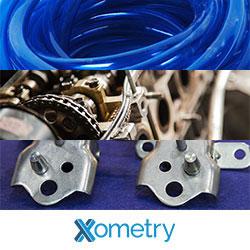Carbon SpeedCell™: Additive Manufacturing Reinvented
World's first 3D-printed skyscraper to be built in UAE
Researchers fire 3-D printed ammo out of a 3-D printed grenade launcher
Ford is trying 3D printing for car parts
3D Printing Is Already Starting To Threaten The Traditional Spare Parts Supply Chain
A 10K tiny house 3D-printed in 24 hours
BeeHex Raises $1 Million For Fresh Food Robots
How Industry 4.0 and BIM are Shaping the Future of the Construction Environment
Dubai company ready to 3D print your house, says 19-year-old founder
3D Printing: Should You Go Open Source?
Race For 3D Printing Capacity Could Revive M&A
This 3D-Printer Uses Holograms for Super-Fast Printing
MakerBot is laying off a third of its staff, narrowing focus under Stratasys
Beyond the Hype: What's Next for Industrial 3D Printing
Oerlikon expands additive manufacturing R&D and production capacity in the US
Records 271 to 285 of 432
First | Previous | Next | Last
Additive & 3D Printing - Featured Product

